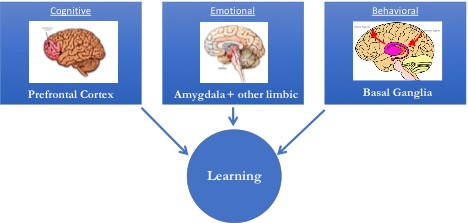From a learning science perspective — the marriage of psychology and brain science — the goal of corporate learning and development platforms is lofty. These platforms aim to help clients provide their employees with effective learning and development through continuous upskilling and reskilling across a broad range of skill sets. These include all of the important classes of skills including hard skills, people skills (or soft skills) and broad-based situational awareness.
For example, one may need to learn rules and regulations, new software, or math and coding (hard skills), or they may need to learn the behaviors (verbal and nonverbal) associated with effective listening and communication (people skills). Finally, one needs to learn what hard skills and people skills are most appropriate in different situations (situational awareness).
L&D vendors must continuously train all of these skills in a constantly changing workforce, in a constantly changing workplace, and in a manner that provides seamless learning within the flow of work.
The Prevalence and Effectiveness of Microlearning for Hard Skills Training
One approach to learning that has grown in popularity in corporate L&D is microlearning. Microlearning is an approach to learning whose goal is to convey information about a single, specific idea in a compact and focused manner with few extras. The key is to provide information within the learner’s working memory capacity and attention span and provide just enough information to allow the learner to achieve a specific, actionable objective.
Microlearning offers an ideal approach for training hard skills because it effectively recruits the cognitive skills learning system in the brain (see schematic below). The cognitive skills learning system relies on the prefrontal cortex, is limited by working memory and attentional processes, and is the primary system in the brain for learning hard skills. Combine microlearning with testing and targeted retraining that is spaced over time and you have a tool that speeds the transition from short-term memory in the prefrontal cortex to long-term memory in the hippocampus and fights against the brain’s natural tendency to forget. This allows you to train hard skills for retention.

The Need to Supplement Microlearning for People Skills and Situational Awareness Training
Although microlearning effectively recruits the cognitive skills learning system in the brain and trains hard skills, some aspects of microlearning are detrimental to people skills training and situational awareness training.
People skills are about behavior. They are about what we do, how we do it and our intent. Behavioral skill learning is not mediated by the cognitive skills learning system in the brain, but rather by the behavioral skills learning system in the brain. The behavioral skills learning system recruits the basal ganglia, a subcortical brain structure, that does not rely on working memory and executive attention for learning. Rather, the basal ganglia learns behaviors gradually and incrementally via dopamine-mediated error-correction learning.
Behavior skills learning is optimized when the learner trains on multiple scenarios that differ qualitatively or in very nuanced ways. For example, executive leadership training scenarios could include those with a large or small group, a very ethnically diverse or homogeneous group, like-minded individuals or individuals with a broad array of beliefs. In all cases, executive communication is being trained, but the scenarios differ greatly. It is the breadth of scenarios that enhances generalization, transfer and long-run behavior change.
Situational awareness involves understanding how information, events and actions around us impact our current situation and how changes might impact the future. It is about reading the current situation and having a feel for what might come next. Situational awareness relies on emotional learning. The critical brain regions are the amygdala and other limbic structures. The detailed processing characteristics of this system are less well understood than the cognitive and behavioral skills learning systems, but emotional learning is at the heart of situational awareness as emotional processing strongly affects both cognitive and behavioral skills learning.
Much like behavioral skills learning, situational awareness relies critically on exposure to a broad range of scenarios with rich contextual cues and storytelling. Training on a broad range of situations teaches the learner to think on their feet and to be confident that they can handle any situation at any time.
Scenario-Based Microlearning
The learning science considerations outlined above suggest that microlearning approaches must be modified to effectively train people skills and situational awareness. The problem is not with the duration of training; short-duration training is advantageous. The problem is with the notion of training on a single, specific idea in a compact and focused manner with few extras. It is the extras and broad range of contexts and situations that are required to train people skills and situational awareness. One can train a specific idea but it needs to be trained with nuance embedded within a context-rich story that engages emotional learning systems in the brain. This draws the learner in and allows them to “see themselves” in the training.
Some vendors have embraced the need for scenario-based microlearning. Some applications describe a specific scenario using static pictures and text, whereas others use video-based presentations with animation, live actors or both. In both cases, the learner is exposed to the scenario and gains hard skills knowledge as well as situational awareness. This type of training does prime the learner for behavior change but does not engage behavioral learning directly. Some vendors offer targeted practice for learners following scenario-based microlearning to enhance behavior change.
If the scenario-based microlearning is interactive, where the learner is engaged in behaviors that are rewarded or punished, then people skills can also be trained. Fewer offerings of this sort are available, though the numbers are growing, and they tend to use virtual reality or interactive video platforms. These also train people in situational awareness.
Conclusions and Recommendations
L&D vendors offer clients tools for continuously upskilling and reskilling employees across a broad range of skill sets. Because learning needs to be time-effective and within the flow of work, microlearning principles have become popular. Microlearning is especially useful for training hard skills and for engaging the cognitive skills learning system, but is less effective at engaging emotional learning centers to develop situational awareness and behavioral learning centers to develop people skills.
One approach that has been embraced by forward-thinking vendors is to infuse microlearning content with highly contextualized storytelling scenarios. When implemented with static pictures and text, or with animated or live-actor video, scenario-based microlearning content can effectively train hard skills and develop situational awareness. When the scenario-based content is made truly interactive for the learner, people skills and situational awareness can be trained.
If you are shopping for an L&D platform, focus on vendors who embrace scenario-based microlearning principles. Whether text plus static pictures or video-based, these offerings will enhance hard skills learning and situational awareness. If the vendor also offers a formal mechanism for testing and spaced training, all the better. This approach is needed to ultimately transfer knowledge from short-term to long-term memory stores.
You should also probe vendors on plans for incorporating interactivity into their scenario-based microlearning solutions. The brain requires real-time interactivity to directly train behavioral skills. The increase in automation in the workplace is increasing the importance of people skills in employees, and the numerous incidents of unconscious bias as well as the #MeToo movement, suggest that people skills like effective communication, leadership and embracing diversity are critical to corporate success. Although interactive scenario-based microlearning applications may not be implemented today, make sure that they are on the vendor’s roadmap for the near future. It is important to ensure that the vendor you choose has that vision.















